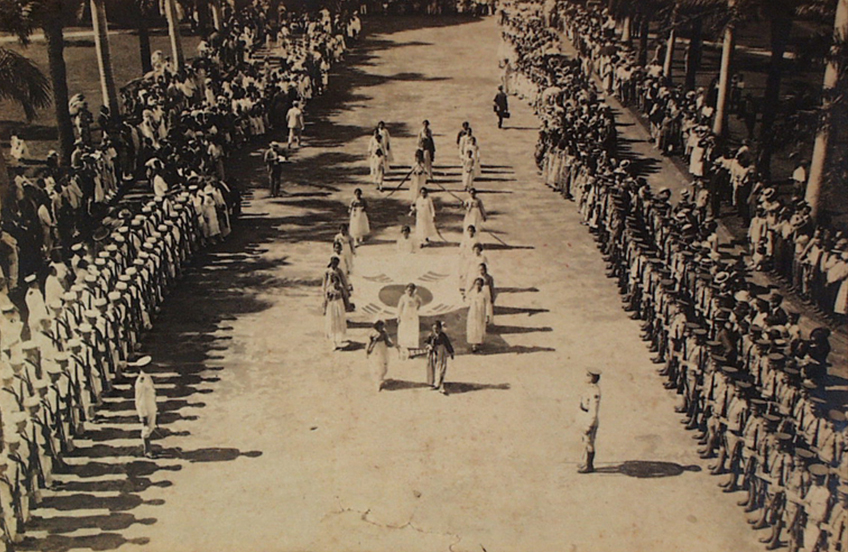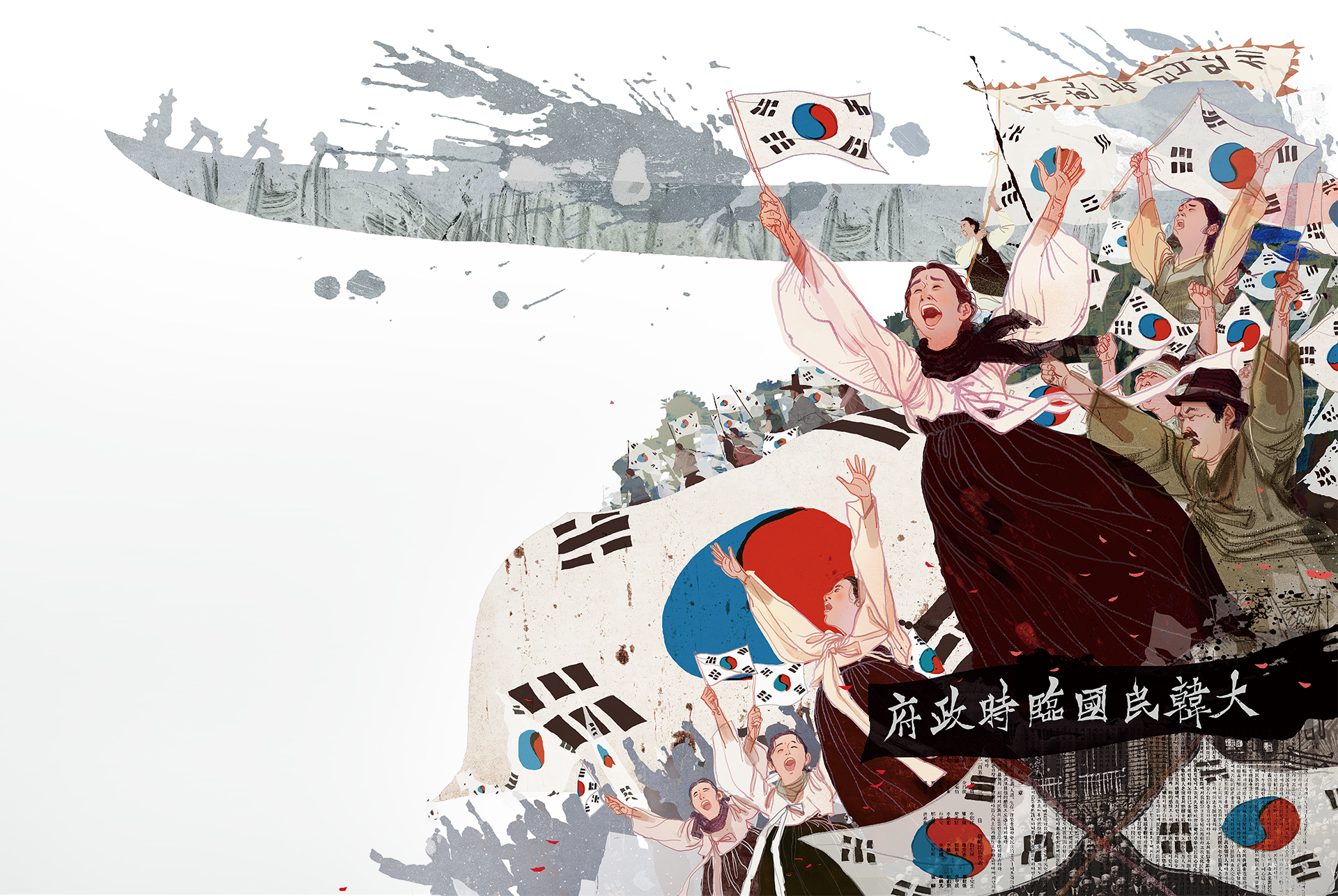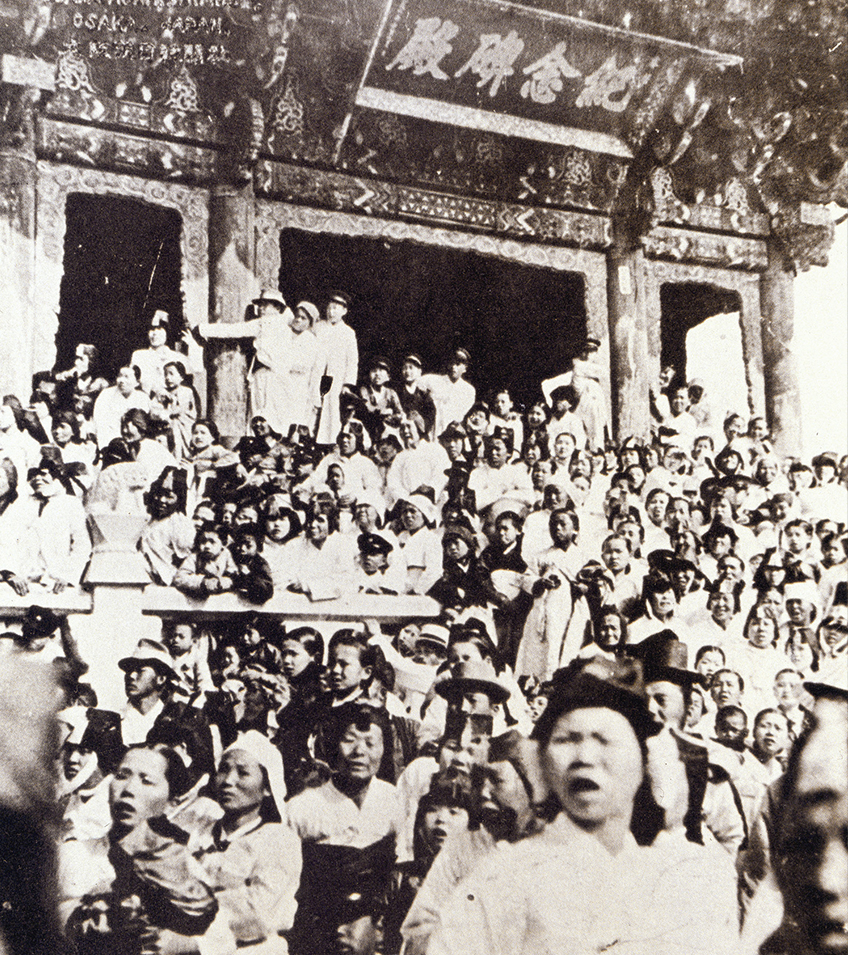Emerging as a military power in East Asia in the early 19th century, Japan in 1905 forced Korea to sign the Eulsa Treaty, resulting in Korea losing its diplomatic rights and being annexed by Japan in 1910.
Despite these unfortunate developments, both Korean individuals and groups sought to regain sovereignty of their country. Among the many campaigns to that end was the March First Independence Movement of 1919, which laid the foundation for the establishment of the Korean Provisional Government in Shanghai. The year 2019 marks the centennial anniversary of both the historic movement and the founding of the Korean Provisional Government.
Koreans hold mass protests against Japanese colonial rule in front of the traditional gate Gwanghwamun in Seoul.
Drawing Global Attention
The March First Independence Movement holds significance not only in Korea but also in world history as a pioneering non-violent protest. The underlying ideals of peace and freedom, waged with no personal motives, partisan politics or practical gains in mind, resonated with people worldwide. Because of its public and empowering nature, the movement had a huge transformative impact.
Before 1919, the world had seen no peaceful massive protest initiated by the oppressed under an anti-imperialist effort. In Russia, the Bolshevik Revolution of 1917 featured violence that led to the mass murder of landlords. Two years later, two million Koreans, or more than 10 percent of the population at the time, took to the streets in a peaceful protest against their Japanese colonial rulers. The demonstrators demanded independence in chants while proudly waving the Korean flag.
A century has passed since the movement but certain countries still harbor imperialistic ambitions. As such, Korea and the rest of the world should reflect on the meaning of the movement and grant it World Heritage status. Rabindranath Tagore, the first Asian to win the Nobel Prize and a close friend of Indian activist Mahatma Gandhi, called Korea “the lamp of the East” in recognition of its contributions to peace.
Jawaharlal Nehru, the first prime minister of India, wrote a letter to his 16-year-old daughter that was later published in the book Glimpses of World History. It said, “For many years the struggle for independence continued and there were many outbreaks, the most important one being in 1919. The people of Korea, and especially young men and women, struggled gallantly against tremendous odds. On one occasion, when a Korean organization fighting for freedom formally declared independence, and thus defied the Japanese, the story goes that they immediately telephoned to the police and informed them of what they had done! Thus deliberately they sacrificed themselves for their ideal. The suppression of the Koreans by the Japanese is a very sad and dark chapter in history. You will be interested to know that young Korean girls, many of them fresh from college, played a prominent part in the struggle.”
Fueled by Provisional Government
While the March First Independence Movement did not directly lead to independence, it did accelerate the setup of the Korean Provisional Government in Shanghai. Korea was declared a democratic republic with sovereignty residing in the people, a principle stipulated in Article 1 of the Provisional Government’s Constitution. After enduring centuries of monarchy and 35 years of Japanese colonial rule, Korea finally became a democratic nation.
As a testament to its impact, the movement remains influential today despite occurring 100 years ago. The spirit of the campaign, which endorses a new order of peace, remains timely thanks to events held last year such as three inter-Korean summits and the first bilateral talks between the leaders of North Korea and the U.S.
The premise of the March First Independence Movement was a pro-democratic dream and vision that asserted the people’s sovereignty and upheld universal values such as freedom, equality, human rights and peace. The centennial anniversary of this historic event should spur every country supporting such values to reflect on the movement’s spirit and principles.

Korean women on Nov. 11, 1921, march waving Korean flags in Hawaii.














 This Korean flag has the signature of freedom fighter Kim Gu, the sixth and final premier of the Korean Provisional Government in Shanghai.
This Korean flag has the signature of freedom fighter Kim Gu, the sixth and final premier of the Korean Provisional Government in Shanghai. The Korean Declaration of Independence, published and distributed in different forms, is now safely stored at the National Archive of Korea.
The Korean Declaration of Independence, published and distributed in different forms, is now safely stored at the National Archive of Korea.




